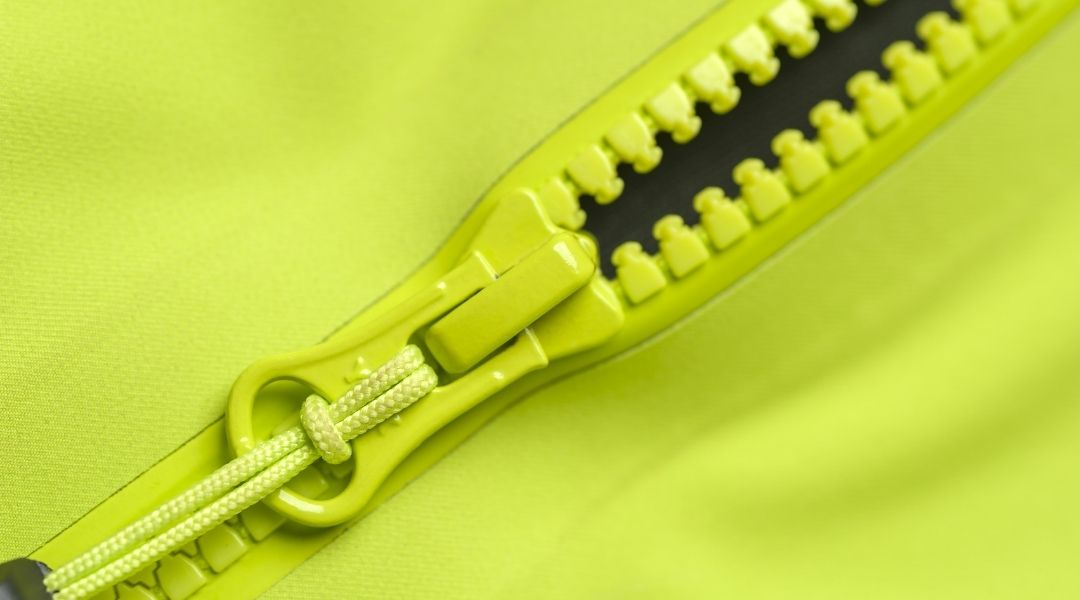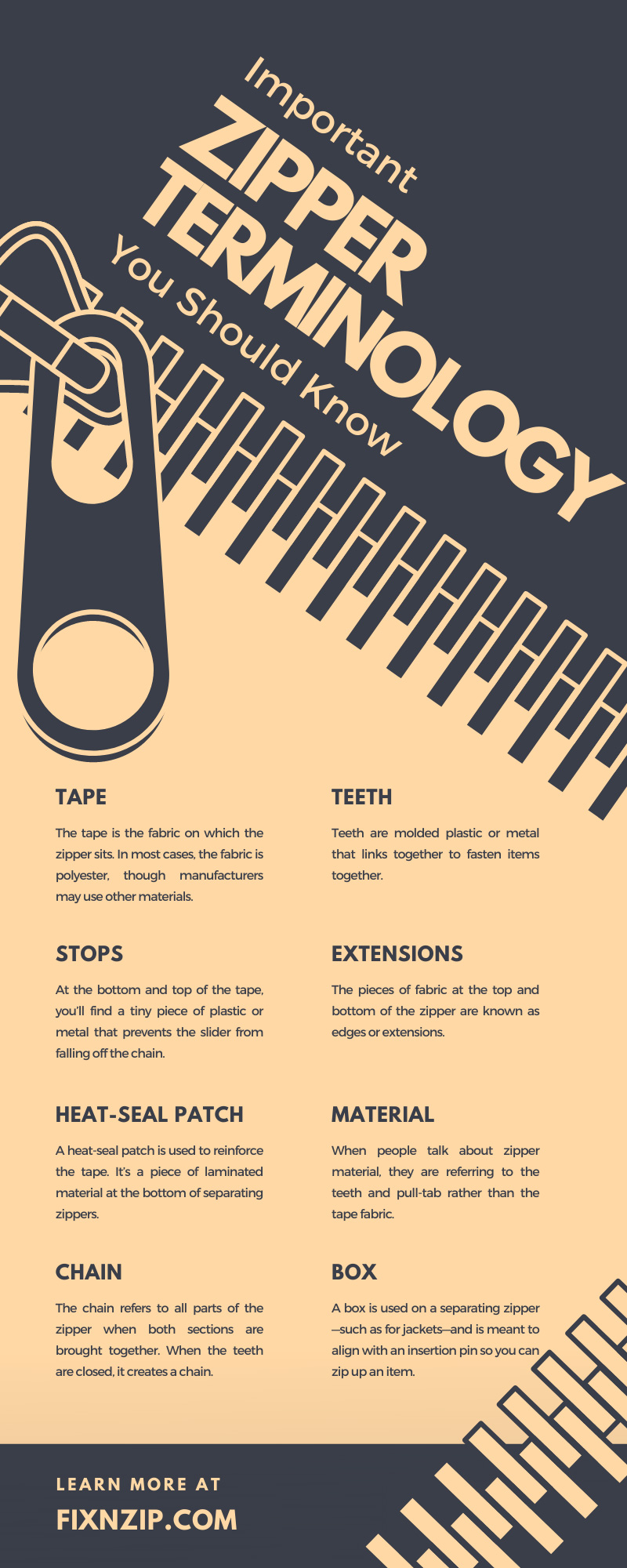
Everyone uses zippers. We love them because they look good and make our lives easier. Regardless of the reason for your fascination with these fasteners, the important zipper terminology you should know will help you understand how to repair or replace one if needed.
You never know when a zipper emergency may strike. Knowledge is power, and these definitions may give you the potential you need to undertake your own sewing projects. Use these details to get started.
The slider is the piece that closes the teeth of the zipper by moving up and down the chain. Different types of sliders exist depending on the type of zipper.
The pull-tab is the most important element of the slider. It allows you to use the zipper and helps you pull the slider across the teeth.
The tape is the fabric on which the zipper sits. In most cases, the fabric is polyester, though manufacturers may use other materials.
Teeth are molded plastic or metal that links together to fasten items together. Some are individually sewn into the tape while others are made as a unit.
At the bottom and top of the tape, you’ll find a tiny piece of plastic or metal that prevents the slider from falling off the chain. These are top and bottom stops.
The pieces of fabric at the top and bottom of the zipper are known as edges or extensions. They help when sewing in a zipper.
A heat-seal patch is used to reinforce the tape. It’s a piece of laminated material at the bottom of separating zippers. It protects the bottom edge or extension.
When people talk about zipper material, they are referring to the teeth and pull-tab rather than the tape fabric. For instance, the zipper might be made of metal or plastic.
The chain refers to all parts of the zipper when both sections are brought together. When the teeth are closed, it creates a chain.
A box is used on a separating zipper—such as for jackets—and is meant to align with an insertion pin so you can zip up an item.
Depending on how your zipper was manufactured, it may include either a left or right insertion pin. Only separating zippers with boxes have this feature.
Jacket zippers are separating zippers that use a single slider, box, or insertion pin. They come apart completely.
These zippers have two pull-tabs so you can decide which section of your item is fastened. These are also known as double zippers, and you’ll often see the bottom of the zipper separate to allow room for legs.
Unlike separating zippers, these don’t open at the bottom. They have a bar that goes across the bottom to prevent the fastener from separating once the slider reaches the end.
Also known as an auto-lock slider, this feature prevents your zipper from separating unless you move the pull tab. It has a locking pin that allows it to grip the teeth so it doesn’t slide on its own.
These are the opposite of locking sliders. Non-locking types are easier to glide along the teeth. You might find them on handbags or wallets.
As the name suggests, you can’t see this type of zipper. They are designed to hide within the item they’re sewn into. The teeth coil into the fabric to hide the material. They are typically sewn under a flap of fabric to conceal them even more.
Typically used by manufacturers, continuous chains are endless zippers that you can cut to the size you desire. They don’t feature any extra elements, such as stops or boxes. This type of craft zipper is customizable.
These zippers are finished and contain all the desired components (i.e. insertion pins and stops). They are pre-cut to the desired length you need to complete a project.
Metal zippers are common, although they typically aren’t used on marine or camping gear. Since metal can rust, metal zippers aren’t the first choice for water-resistant items. Still, it’s a durable zipper material that’s often used for duffel bags, coats, and leather goods. Metal teeth are clamped directly into the fabric so they’re resistant to wear and tear.
These molded plastic fasteners are stiff and strong. The teeth are pressed right into the tape for a secure hold that makes these some of the most popular zippers available.
Small flexible coil zippers are excellent for tents, curtains, and cushions that have rounded edges. The zipper can bend, making it ideal in many situations.
The gauge size refers to the size of the teeth, and it’s measured in millimeters. You measure the size of a zipper by measure the teeth when the chain is closed. Typically, you can find the size listed on the pull tab.
Two get the width of the tape, you’ll measure each side separately. It’s important to know this measurement when sewing a zipper to a garment.
This term refers to how a zipper is made for a particular use. For instance, some are designed for fashion while others are crafted for outdoor use.
The first thing you should think of when your zipper slider breaks is the FixNZip. This universal zipper repair kit fits on fasteners of any size or material so you can use them again. Simply loosen the thumbscrew and fit the device over your zipper. Once you tighten it, you can use your zipper again.
Save this important zipper terminology to reference when you need a refresher on the different types you should know. Whether you need to repair an item or to make your own clothes, knowing more about zippers will give help you make the right decisions for your projects.

